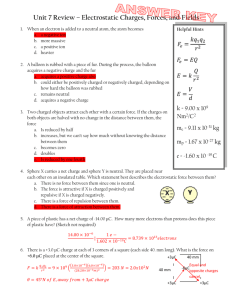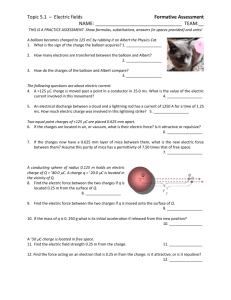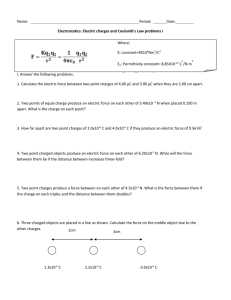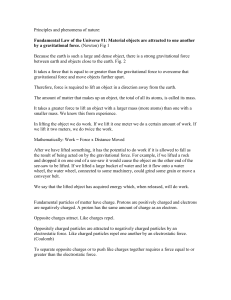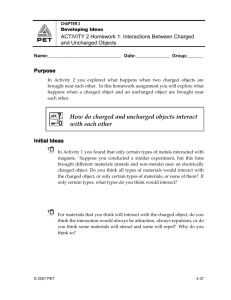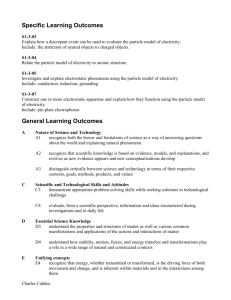Physics APB notes - 1-9-13 charging objects
advertisement
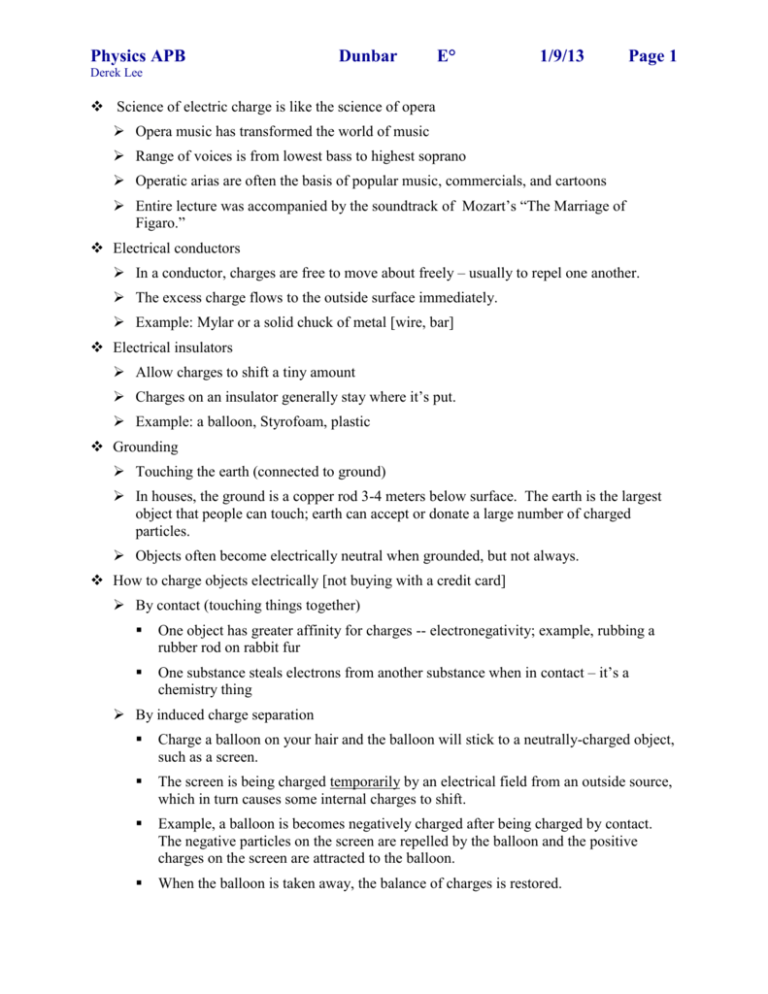
Physics APB Dunbar E° 1/9/13 Page 1 Derek Lee Science of electric charge is like the science of opera Opera music has transformed the world of music Range of voices is from lowest bass to highest soprano Operatic arias are often the basis of popular music, commercials, and cartoons Entire lecture was accompanied by the soundtrack of Mozart’s “The Marriage of Figaro.” Electrical conductors In a conductor, charges are free to move about freely – usually to repel one another. The excess charge flows to the outside surface immediately. Example: Mylar or a solid chuck of metal [wire, bar] Electrical insulators Allow charges to shift a tiny amount Charges on an insulator generally stay where it’s put. Example: a balloon, Styrofoam, plastic Grounding Touching the earth (connected to ground) In houses, the ground is a copper rod 3-4 meters below surface. The earth is the largest object that people can touch; earth can accept or donate a large number of charged particles. Objects often become electrically neutral when grounded, but not always. How to charge objects electrically [not buying with a credit card] By contact (touching things together) One object has greater affinity for charges -- electronegativity; example, rubbing a rubber rod on rabbit fur One substance steals electrons from another substance when in contact – it’s a chemistry thing By induced charge separation Charge a balloon on your hair and the balloon will stick to a neutrally-charged object, such as a screen. The screen is being charged temporarily by an electrical field from an outside source, which in turn causes some internal charges to shift. Example, a balloon is becomes negatively charged after being charged by contact. The negative particles on the screen are repelled by the balloon and the positive charges on the screen are attracted to the balloon. When the balloon is taken away, the balance of charges is restored. Physics APB Dunbar E° 1/9/13 Page 2 Derek Lee By induction Steps o Induce a charge separation o Ground the object while the charge is separated o Remove the ground Example o Rub a block of Styrofoam to charge it negatively o Place a metal object on the Styrofoam (an insulator) to induce a charge separation; the +charges migrate toward the surface of the Styrofoam o Grounding the metal with (say) a finger draws the negative charges away from the metal, leaving +charges. o Remove the ground to leave the +charges on the metal so that the metal is now electrically charged. Summary Conductors vs insulators – they behave differently Grounding does not automatically make an object electrically neutral Three ways to electrically charge an object HW – Chapter 18 Day 1 – write brief sentences


